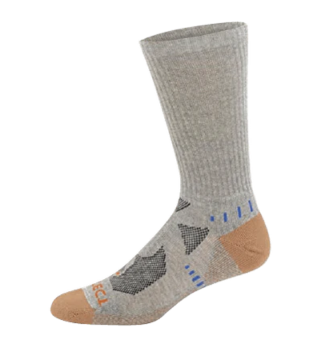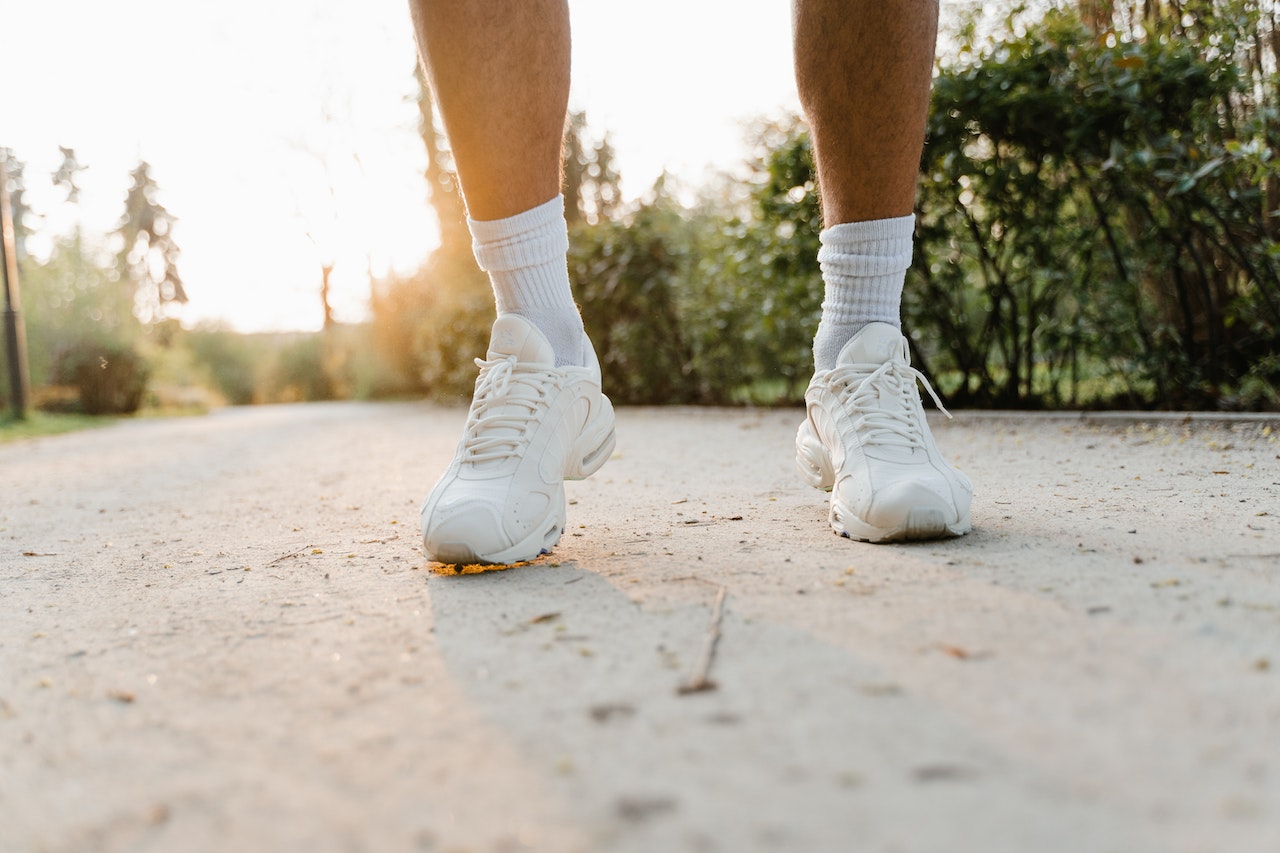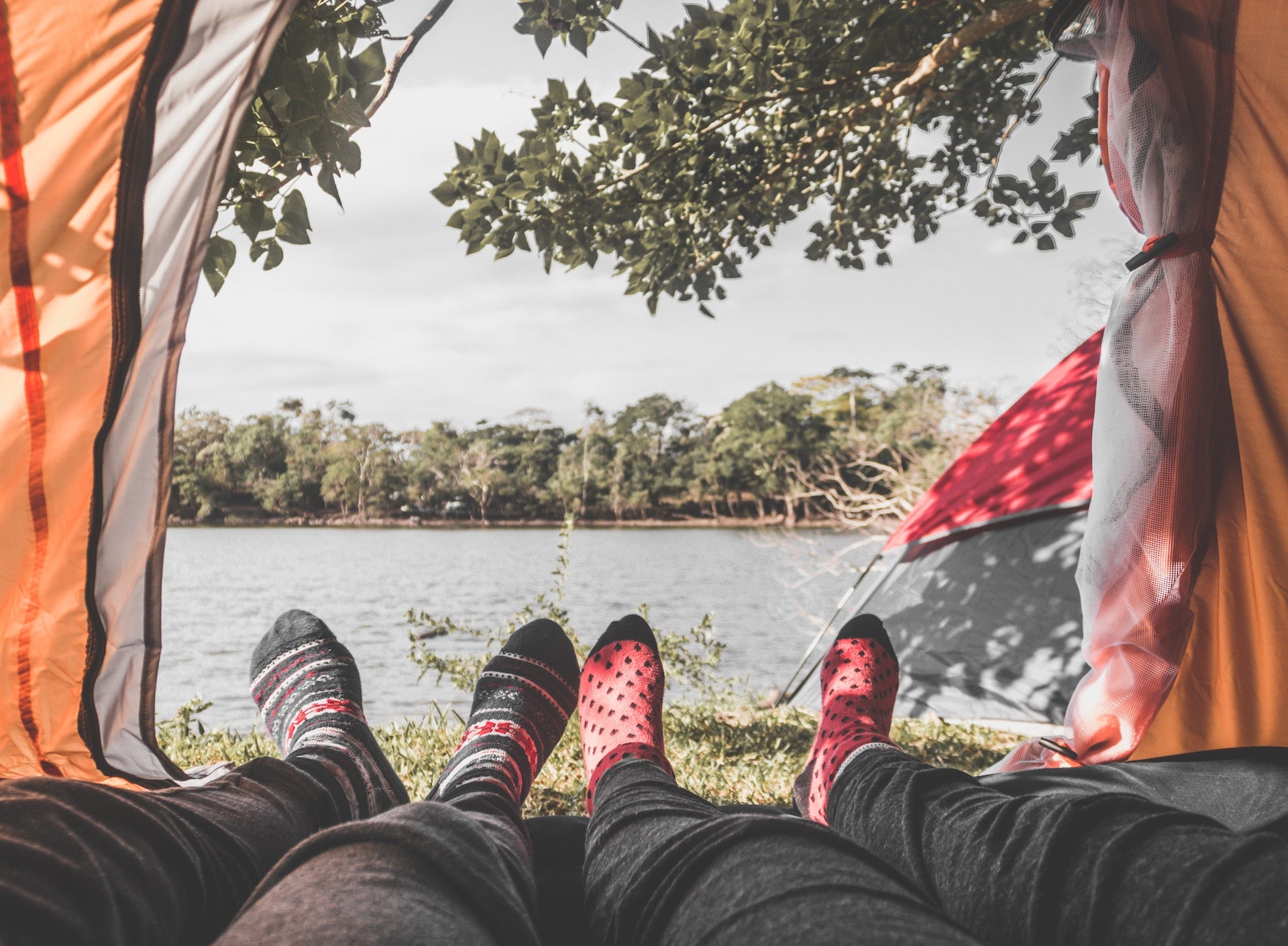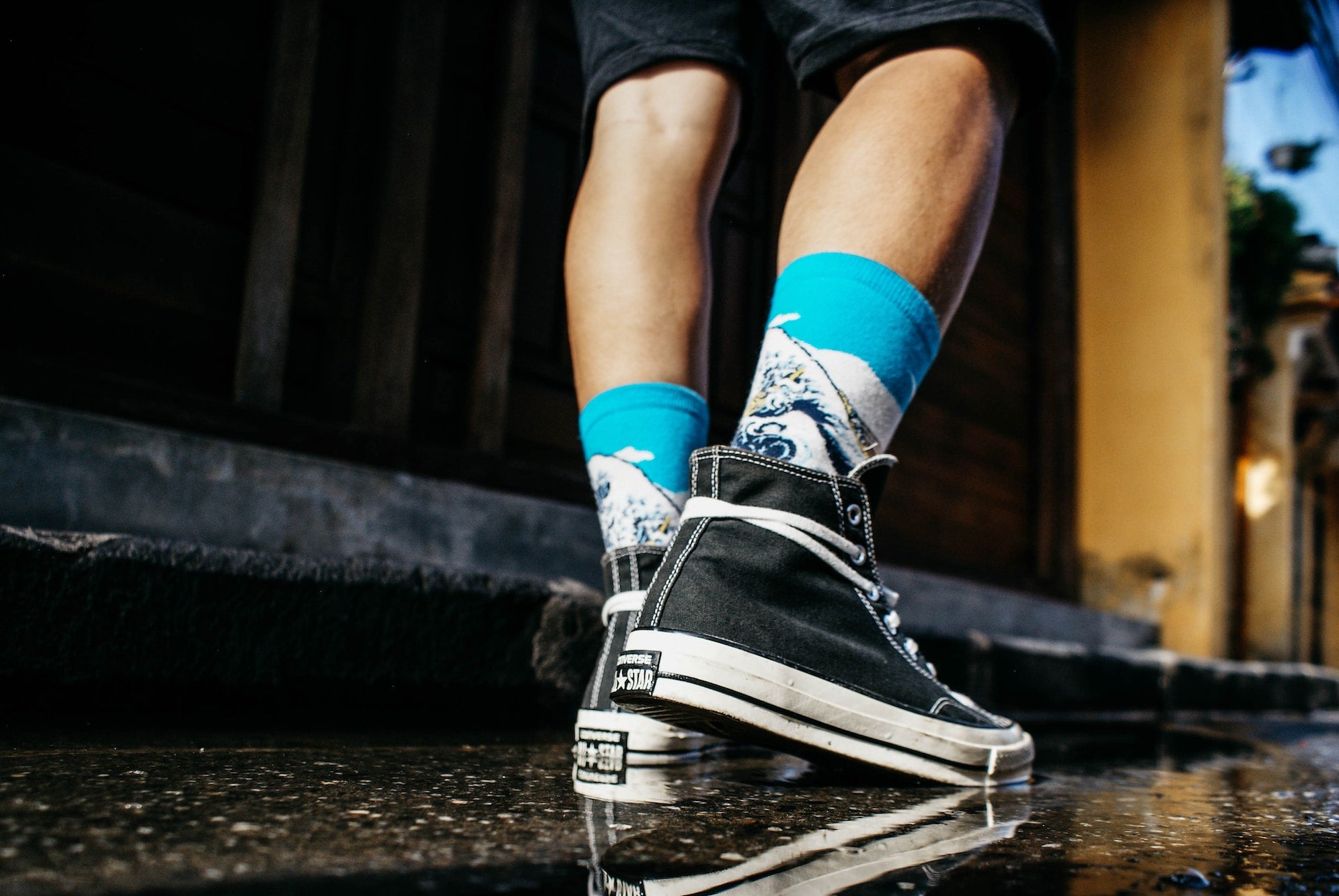
If you want to keep your feet dry and healthy, you need a pair of moisture-wicking socks. Whether you're an athlete or want to stay comfortable throughout the day, these socks offer numerous benefits and are worth the money.
But if you're like most people, you're probably wondering, what makes them so special compared to regular socks?
What Are Moisture Wicking Socks?
Moisture wicking is a term used to describe a fabric's ability to draw moisture away from the skin and quickly evaporate it into the air, leaving the skin feeling cool and dry. This technology is especially important for socks, as feet are prone to sweating, which causes a multitude of problems.
Moisture-wicking socks leverage the hydrophobic properties of synthetic or natural fibers to pull moisture away from the skin and toward the sock's surface, where it can evaporate. This process helps prevent moisture buildup inside shoes and reduces bacterial growth and foul odors. The breathability of fabrics is critical in determining their moisture-wicking abilities.
Breathable fabrics allow air to circulate between the skin and clothing or footwear, allowing sweat to evaporate more effectively. Synthetic materials are known for their excellent breathability, making them popular choices for athletic wear.
However, natural materials like merino wool also have excellent breathability thanks to their porous structure.
Do Moisture-Wicking Socks Work?
Moisture-wicking socks prevent foot problems caused by sweat buildup during physical activities like running, hiking, or any sport that requires exertion. Studies have shown that these socks effectively reduce moisture buildup on the skin's surface.
Additionally, moisture-wicking socks are designed with advanced technology, including mesh venting, arch support, and seamless toe design, which ensures maximum comfort and support while allowing optimal airflow.
The Benefits Of Wearing Moisture Wicking Socks
Moisture-wicking socks provide many benefits for those who wear them, some of the essential benefits being:
- Reduced moisture and sweat: Moisture-wicking socks help to reduce moisture and sweat on the feet. As a result, they can keep your feet dry and comfortable, even during intense activity.
- Prevention of blisters: By reducing moisture on the feet, moisture-wicking socks can also help to prevent blisters from forming. Blisters are often caused by friction between the skin and damp socks or shoes.
- Reduced odors: Because they keep your feet dry, moisture-wicking socks are also less likely to develop unpleasant odors caused by bacteria growth in damp environments.
- Improved comfort: Moisture-wicking socks are typically made from soft and stretchy materials that conform to the shape of your feet for a more comfortable fit.
- Better thermoregulation: Many moisture-wicking socks are designed to regulate temperature and moisture, helping to keep your feet warm in cold and hot weather.
Moisture-wicking socks are a fantastic solution for improving foot health and comfort when engaging in physical activity or wearing shoes for daily use. Whether you're an athlete or simply searching for more comfortable footwear, these innovative products can significantly enhance how you feel throughout the day.
What Sock Material Has The Best Moisture Wicking Properties?
When it comes to moisture-wicking socks, the material used is crucial to how well they work. Some materials are more effective at drawing moisture away from the skin than others. With the most commonly used materials being:
- Merino Wool: If you're looking for socks that will keep your feet dry and comfortable, merino wool is a great option. This type of wool has fantastic moisture-wicking abilities, which makes it perfect for socks. Furthermore, it's naturally antibacterial and resistant to odors, so that you can wear them for extended periods without any concerns about foot odor.
- Bamboo Fiber: Socks made from bamboo fiber are another great option if you're looking for excellent moisture-wicking. Bamboo is naturally absorbent and can wick away sweat from your feet quickly; it's even breathable and helps to regulate temperature.
- Nylon: While not a natural fiber like merino wool or bamboo, nylon is an excellent option for those looking for strong yet durable, moisture-wicking socks. It's also very stretchy and lightweight, which is why many athletes prefer it.
- Polyester: Polyester is a synthetic material that effectively wicks sweat away from your feet. It is highly durable and does not readily absorb water or sweat.
While many people prefer merino wool for its natural antibacterial properties and odor resistance, other materials like bamboo fibers or synthetic fibers such as nylon or polyester can also work well and provide durability. Ultimately, the choice of material depends on your personal preferences and needs.
What Is Merino Wool?
Merino wool is one of the most commonly used materials in moisture-wicking socks. This type of wool comes from Merino sheep, explicitly bred for its soft and delicate wool fibers. The unique properties of Merino wool make it an ideal material for use in athletic socks due to its ability to wick away moisture and regulate temperature.
Merino wool is popular because its softer and more comfortable against the skin. It's gentle on sensitive skin and less likely to cause irritation or itching. Moreover, it has a natural elasticity allows it to conform to the foot's shape without losing its form over time.
One of the significant advantages of Merino wool is its ability to wick away moisture effectively, especially compared to regular wool.
The fibers have a natural crimp that creates tiny pockets where air can be trapped, providing excellent insulation and allowing moisture to escape through evaporation. This means that even when your feet are sweating, they will stay dry and comfortable inside your shoes.
How Is Merino Wool Different From Regular Wool?
Merino wool fibers are thinner and softer than regular wool fibers, making them much more comfortable against the skin. On the other hand, regular wool fibers tend to be thicker and coarser, which can lead to irritation and itching when worn for extended periods.
Regular wool and Merino wool have different moisture-wicking properties. Merino wool socks can absorb up to one-third of their weight without feeling heavy or uncomfortable. On the other hand, regular wool socks are less comfortable, heavier, and take longer to dry for the same amount of water. This means that your socks will still feel dry and comfortable even if your feet sweat heavily.
Merino wool is also naturally antibacterial, which helps prevent foot odor caused by bacteria growth on the skin's surface. Saving you additional time or money since you won't need extra chemicals or treatments to keep your feet smelling fresh.
Merino wool has exceptional insulating properties due to its distinctive fiber structure, allowing your feet to stay warm and cool, and dry in warmer temperatures.
Conclusion: How Moisture Wicking Socks Benefit Foot Health
If you want to take good care of your feet, then consider getting moisture-wicking socks. They are designed to absorb moisture and prevent bacteria and fungi from growing, which helps keep your feet dry and smelling fresh. Moisture-wicking socks can also help prevent blisters, calluses, and other foot issues caused by excessive moisture.
Aside from their practical benefits, moisture-wicking socks come in various styles and colors to suit your fashion sense. Some even have additional padding or arch support for added comfort.
Investing in high-quality moisture-wicking socks is an effortless way to improve your foot health and overall comfort. By keeping your feet dry and healthy, you can stay on your feet for longer and feel more comfortable throughout the day.
So why not order a pair of moisture-wicking socks today and experience the difference for yourself?






30 comments
Leave a comment
This site is protected by hCaptcha and the hCaptcha Privacy Policy and Terms of Service apply.